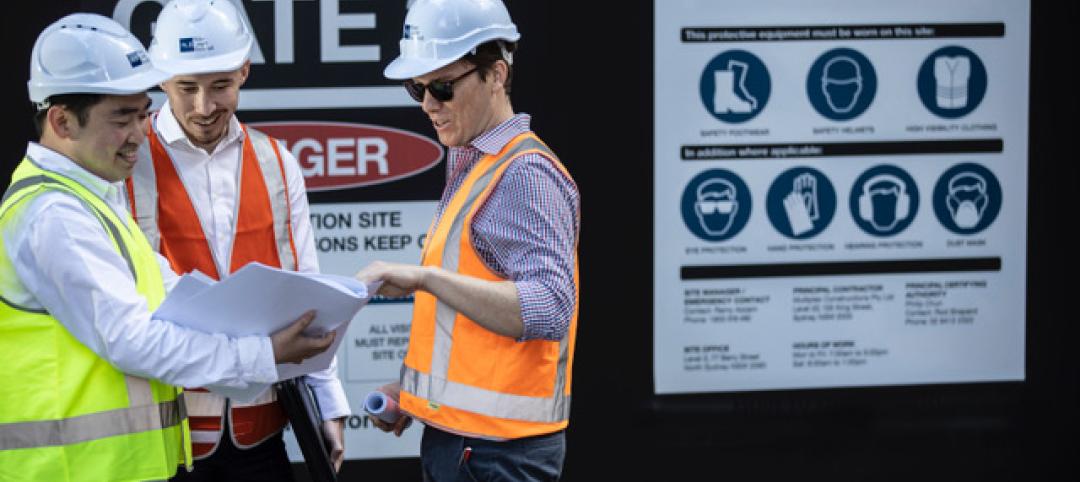The construction unemployment rate jumped to 18.8% in November as the sector lost another 5,000 jobs since October, according to an analysis of new federal employment data released today by the Associated General Contractors of America. The data indicates that the construction sector has suffered more than any other industry during the economic downturn, association officials said.
"The unemployment report shows construction still has not broken free of the recession that has gripped the industry since 2006," said Ken Simonson, the association's chief economist. "Other than the stimulus and other temporary federal programs, it has been a pretty bleak four yours for the industry."
Simonson noted that the construction industry has lost 2.1 million jobs since employment in the sector peaked in August 2006. He added that the sector has continued to lose jobs during the past twelve months even as overall private employment has picked up. Since November 2009, the industry has lost 117,000 jobs while the private sector added 1,088,000 jobs. The industry's 18.8% unemployment rate, not seasonally adjusted, also was the highest of any industry and roughly double the overall unemployment rate.
The only construction segment to add jobs in the past year has been heavy and civil engineering construction, which has benefitted from federal stimulus, military base realignment, and Gulf Coast hurricane-prevention projects, Simonson observed. Meanwhile, residential construction has lost 79,000 jobs over the past twelve months, while nonresidential specialty trade contractors and nonresidential building - the other two segments in the nonresidential category - have lost 62,000 jobs.
Association officials cautioned that the stimulus and other temporary federal programs would begin winding down in 2011, most likely before private, state or local demand for construction picks up. They urged Congress and the Administration to act on a series of long-delayed infrastructure bills for water, transportation and other infrastructure programs.
"We're hoping Congress doesn't cut off federal investments that are almost single-handedly keeping this industry together," said Stephen E. Sandherr, the association's chief executive office. "Even the Deficit Commission understands that the one thing we can't afford to do as a nation is neglect our infrastructure," Sandherr added, referring to the commission's proposal to raise the gas tax to fund transportation upgrades.
Related Stories
Contractors | Oct 5, 2022
Materials shortages, cost spikes throwing Design-Bid-Build process out of whack
The traditional Design-Bid-Build delivery process is under considerable stress this year as materials shortages and cost spikes are upending usual practices, according to a new report from JLL.
Green | Oct 5, 2022
In California, a public power provider’s new headquarters serves as a test case for an innovative microgrid and for reducing greenhouse gas emissions
Sonoma Clean Power (SCP), the public power provider for California’s Sonoma and Mendocino Counties, recently unveiled its new all-electric headquarters.
Contractors | Oct 4, 2022
Project managers: Know your workforce
The number of considerations that go into starting a construction project are almost too numerous to count. Contracts, materials, labor, deadlines, even weather, to name a few. They vary from project to project, and any one of them can change in an instant, whether it be materials suddenly in short supply, labor that isn’t available for your particular kind of project (is it luxury hospitality or affordable residential?), or an unexpected phenomenon like Covid-19 that makes everything suddenly screech to a halt.
Contractors | Oct 4, 2022
Which comes first, the building or the cost estimate?
At the start of a project, don’t forget to establish financial parameters when you’re discussing the design and program. By establishing the costs up front, you can avoid the pitfalls that might derail your project and guarantee its lasting success.
Fire and Life Safety | Oct 4, 2022
Fire safety considerations for cantilevered buildings
Bold cantilevered designs are prevalent today, as developers and architects strive to maximize space, views, and natural light in buildings. Cantilevered structures, however, present a host of challenges for building teams, according to José R. Rivera, PE, Associate Principal and Director of Plumbing and Fire Protection with Lilker.
| Oct 4, 2022
Rental property owners want access to utility usage data for whole properties
As pressure from investors for ESG reporting mounts, owners of multifamily properties increasingly look to collect whole-building utility usage data.
| Oct 4, 2022
In dire need of affordable housing, Aspen, Colo. will get a development that provides 277 affordable homes
A few miles from downtown Aspen, Colo., a development will provide 277 new affordable homes for an area experiencing a dire affordable housing crisis.
Green | Oct 3, 2022
California regulators move to ban gas heaters for existing buildings
California regulators voted unanimously recently on a series of measures that include a ban on the sale of natural gas-powered heating and hot water systems beginning in 2030.
| Oct 3, 2022
The College of the Holy Cross completes a $110 million performing arts center
In Worcester, Mass., a one-hour drive from Boston, the College of the Holy Cross has completed its $110 million Prior Performing Arts Center.
Resiliency | Sep 30, 2022
Designing buildings for wildfire defensibility
Wold Architects and Engineers' Senior Planner Ryan Downs, AIA, talks about how to make structures and communities more fire-resistant.
















